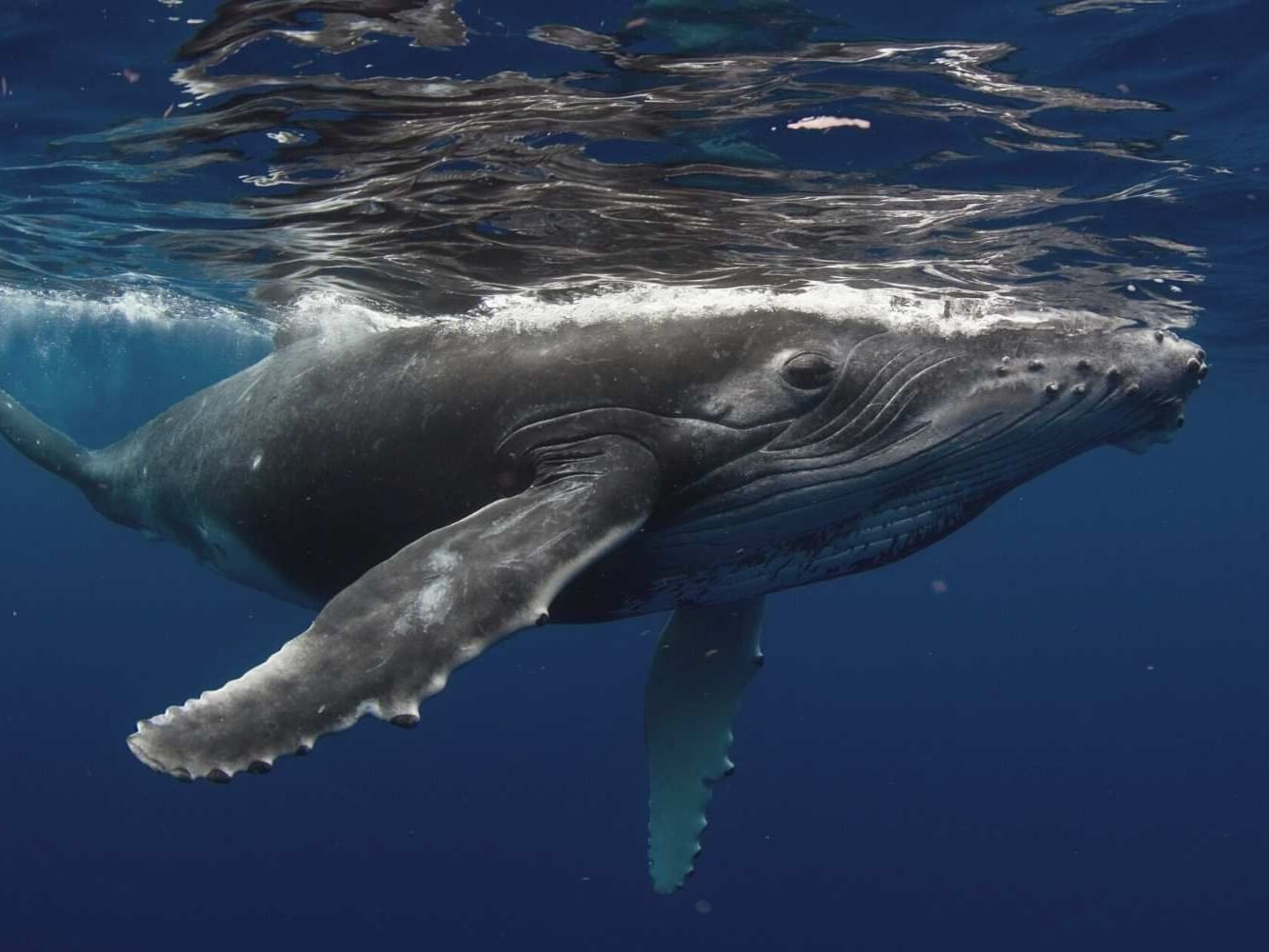The Ultimate Guide to Whale Watching in Hawaii
Whale watching in Hawaii is one of the many activities you will not want to miss when visiting the idyllic islands. The Hawaiian islands are a popular haven for these massive beauties due to Hawaii's year-round warm climate and water. Scientists believe that a gigantic two-thirds of the North Pacific humpback whale population migrate to Hawaii to breed and nurse their calves each year. A bucket-list must-have is a trip to witness the majestic humpback whales ("koholā" in Hawaiian) and soak in the scenic ocean views.
Make sure to add this once-in-a-lifetime experience to your itinerary! Here's everything you need to know to plan the perfect day at sea.
Best Seasons for Whale Watching
Peak season: December through April is the prime time for whale watching in Hawaii, as humpback whales migrate to the warm Hawaiian waters to breed and give birth.
Surrounding seasons: May could also offer sightings, though they are less frequent as the whales leave to find food. Some tour groups guarantee whale or dolphin spotting year-round, with a success rate of over 97%.
Key takeaway: Plan your trip between February and March for the highest chance of seeing these gentle giants.
Types of Whales You Can See in Hawaii
-
Humpback Whales (Koholā): The stars of Hawaii's whale-watching season, these whales are known for their acrobatics and haunting songs. Plus, you may spot some newly born calves and their māmās.
-
Short-finned Pilot Whales: Occasionally spotted in deeper waters in pods of about 25-50, Maui whale-watching tours are more likely to encounter this speedy species.
-
False Killer Whales: Rare but possible sightings near all Hawaiian islands.
-
Melon-headed Whales: These 9-foot-long whales travel in large pods of around 300. Signings are rare as they prefer offshore, deeper waters.
-
Blainville and Cuvier’s Beaked Whales: These curious whales are commonly seen near The Big Island. Their noses resemble those of bottlenose dolphins but are larger, measuring 15-25 feet.
Top Hawaii Whale-Watching Locations
-
Maui: Maui's Au'au Channel offers one of the best Maui whale-watching tours in the world.
-
Big Island (Hawai'i Island): Kona Coast offers calm waters and frequent sightings. Hilo Bay on the east coast can also offer plenty of occasions for whale spotting. Head to the "hill of the whale" at the Puʻukoholā Heiau National Historic Site for elevated land spotting.
-
Oahu: Makapu'u Lighthouse Trail (only 14 miles from our Waikiki Resort Hotel) or tours departing from Honolulu Harbor.
-
Kaua'i: Po'ipu Beach, Kīlauea Lighthouse, and Kapaʻa Overlook on the island’s Coconut Coast.
How to Plan a Whale Watching Tour in Hawaii
-
Book in advance: Tours can fill up quickly during peak season, so reserve your spot early. Booking earlier in your trip also allows space for you to rebook if you do not get to see the whales.
-
Choose a highly rated tour company: Look for companies with eco-friendly practices and experienced local guides. Some companies hold a 'guaranteed whale sighting policy' that allows you to rebook at a discounted rate if you do not spot the whales.
-
Go early: Morning tours are often calmer and provide a better chance of a whale encounter. Plus early mornings have the best light for that Instagrammable shot!
-
Tour types:
-
Boat tours: Ideal for getting closer to the whales who prefer deeper waters.
-
Kayak or stand-up paddleboard (SUP) tours: A more intimate, eco-friendly option.
-
Land-based viewing: Great for those who prefer to stay on shore.
-
Top 9 Must-Haves for a Whale-y Good Time!
-
Polarized sunglasses to reduce glare on the water.
-
A wide-brimmed hat for sun protection.
-
Binoculars for better whale spotting.
-
A waterproof camera or smartphone.
-
Light jacket or windbreaker (it can get breezy on the water).
-
Snacks and water (check if the tour provides these).
-
Anti-nausea medication if you're prone to seasickness.
-
A small dry bag to protect your belongings.
Final Whale-Watching Tips
-
Follow guidelines: Always keep a respectful distance of 100+ yards from the whales (required by law).
-
Learn from the experts: Guides often have fascinating insights into whale behavior.
-
Keep the aloha spirit: Share the experience respectfully and cherish the natural beauty of Hawaii.
-
Tip your guide: Tipping shows appreciation for excellent service. Read our guide on tipping in Hawaii to learn more.
Whale watching in Hawaii is more than just a tourist activity—it's an opportunity to connect with the beautiful marine life of the islands. With proper planning, the right gear, and a touch of patience, you're sure to create unforgettable memories. Book your tour now and prepare for a humbling and awe-inspiring experience.

